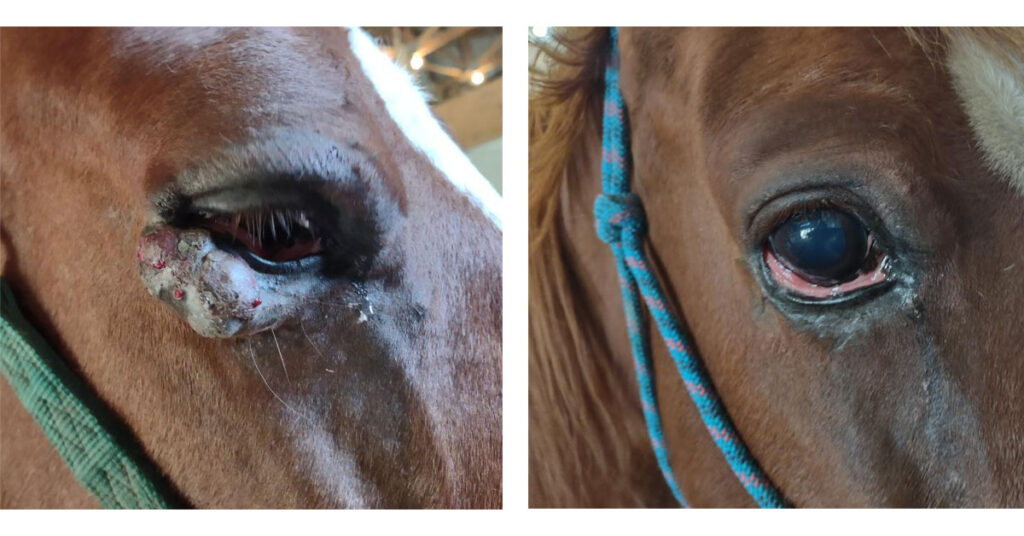
Mycobacterium cell wall fraction (MCWF) from Mycobacterium phlei is a known biological immunomodulator that effectively (and safely) treats sarcoids of the delicate tissues in the periorbital area.
“These tumors are notoriously difficult to treat and not amenable to other treatments such as chemotherapy or radiotherapy as severe tissue reactions occur,” said Jan Doelle, DVM, of Jan Doelle Veterinary Service, in Holmen, Wisconsin, during a Burst Session at the 2023 AAEP Convention in San Diego.
How to Use MCWF to Treat Sarcoids in Horses
To use this product, calculate MCWF dose based on tumor volume (length x width x 0.78) and refer to the dosing chart available at Immunocidin Equine (NovaVive). Administer a minimum dose of 1 mL, and plan to inject the tumor once every two to three weeks for a total of three to six treatments.
“If it is a large tumor, you’ll want to surgically debulk it first to decrease the volume of product that is required,” said Doelle.
To inject, sedate the horse and use a local block around the mass. Using a grid pattern with a 22-gauge needle on a luer lock syringe (these masses are dense and can be difficult to inject), inject two-thirds of the calculated volume directly into the mass and the remaining volume around the mass.
Doelle then shared before-and-after images showing the dramatic decrease in tumor size after only two to three treatments.
“Most require three to four treatments, and there should be very little to no tumor left at the end of the treatments,” she said. “Observe the area closely after the final treatment, and an additional treatment can be added.”
Testimonial for MCWF
As a testimonial to this technique, Doelle described using MCWF as a salvage procedure in a horse that failed to respond to a combination of cisplatin, radiation, and electrochemical therapy, which caused damage to the eye so the horse couldn’t blink. Following MCWF, the horse ultimately recovered well.








